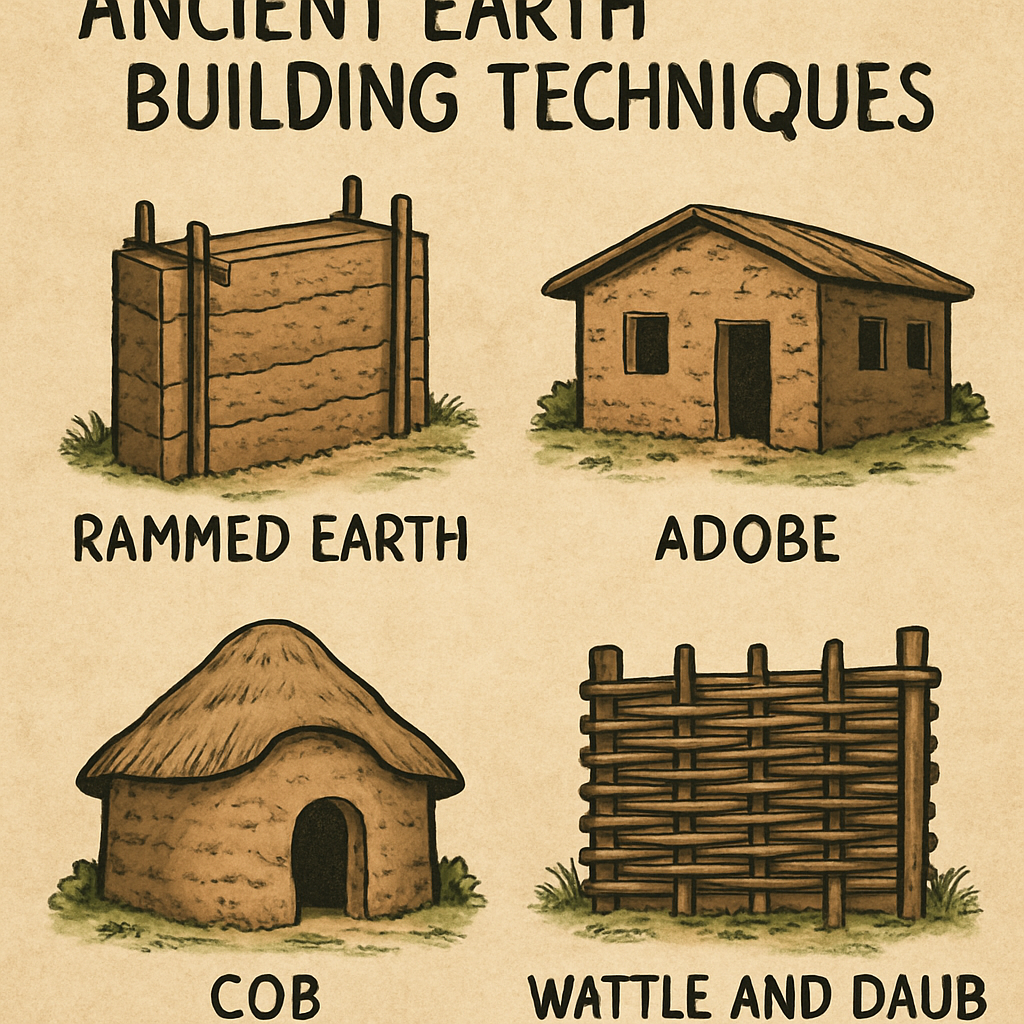Building earth homes is an ancient practice with modern appeal. These homes use natural materials like clay and straw. They offer a sustainable alternative to conventional construction. Earth homes are eco-friendly and reduce carbon footprints. The benefits of building earth homes are numerous. They provide excellent thermal mass, keeping interiors comfortable year-round. Energy costs are lower due to natural insulation. Earth homes are also durable, withstanding extreme weather conditions.
The earth house interior can be both modern and eco-friendly. Customization allows for unique designs that blend with nature. Building earth homes supports local economies by using local materials and labor. This practice fosters community involvement and learning. Earth homes promote healthier living environments. They use non-toxic materials and natural ventilation for better air quality. As awareness of climate change grows, earth homes are gaining popularity. They represent a step towards sustainable living.
What Are Earth Homes? A Brief Overview
Earth homes are constructed using natural materials. Materials often include clay, sand, and straw. These homes are an eco-friendly choice for sustainable living. The design of earth homes varies widely. Key features often include thick walls and natural insulation. Unique designs match surrounding landscapes and individual tastes. Earth building offers several methods:
- Rammed Earth: Compacting layers of earth for structure.
- Cob: A mixture of straw and earth for artistic freedom.
- Adobe: Formed earth bricks dried in the sun.
Each technique has distinct advantages. Choosing the right method depends on climate, location, and personal preference. These options provide flexibility for diverse needs. Earth homes are not just about construction. They’re a lifestyle choice emphasizing environmental responsibility. These homes create a peaceful living space while minimizing impact. Embracing earth homes supports broader goals of sustainable development.
The History and Evolution of Earth Building
Earth building is an ancient practice with deep roots in human civilization. People have used earth as a building material for over 10,000 years. This method has proven effective across diverse climates and regions.
Throughout history, earth homes have adapted to cultural needs. Different civilizations created unique styles and techniques. These adaptations have influenced modern sustainable building practices. Some key historical earth building methods include:
- Pisé de terre: An early version of rammed earth developed in France.
- Wattle and daub: A frame woven with sticks and covered with mud.
- Cob construction: Used in medieval England, providing artistic freedom.
These historical techniques laid the foundation for modern earth homes. Today, earth building incorporates technology and design advancements. The evolution of earth building reflects a blend of traditional methods and contemporary innovation. This fusion offers exciting possibilities for sustainable architecture in the future.
Types of Earth Built Homes: Methods and Styles
Earth built homes come in various forms and styles. Each method offers unique benefits and aesthetics. Selecting a method often depends on climate, resources, and personal preferences.
Rammed earth is a popular choice for its strength and durability. It involves compacting damp soil into molds to create sturdy walls. This technique is favored for its structural integrity and thermal properties.
Cob is another ancient method, known for its handmade appeal. Cob homes use a mixture of clay, sand, straw, and water. This process allows for creative, free-form shapes and artistic expression.
Common Earth Building Methods:
- Adobe: Sun-dried bricks made from clay and straw.
- Earthbag: Stacking bags filled with soil, providing flexibility.
- Compressed Earth Blocks: Mechanically pressed blocks for modularity.
by Bhautik Patel (https://unsplash.com/@bhautik_patel3)
Each style reflects a distinct approach to sustainable architecture. By choosing a method that aligns with one’s environmental and aesthetic goals, builders contribute to eco-friendly living. Whether embracing the organic forms of cob or the precision of compressed earth blocks, earth homes showcase diverse, adaptable designs.
Environmental Benefits of Building Earth Homes
Building earth homes offers many environmental benefits. These homes are constructed using natural materials, reducing reliance on industrial processes. This approach significantly lowers the carbon footprint of construction.
Earth homes are known for their excellent thermal mass. They maintain stable indoor temperatures by absorbing and releasing heat gradually. This natural regulation reduces dependence on heating and cooling systems, saving energy.
Earth buildings require minimal processing and transportation of materials. Many materials, like clay and sand, are locally sourced. This reduces emissions and supports local economies.
Key Environmental Benefits:
- Sustainable Materials: Use of abundant, natural resources.
- Energy Efficiency: Lower energy consumption with natural insulation.
- Reduced Waste: Less construction waste and more recycling potential.
Earth homes integrate seamlessly into natural landscapes. They minimize disruption to the surrounding environment. By blending with the land, they promote biodiversity and respect the ecosystem.
by Julia Verea (https://unsplash.com/@juliaverea)
Moreover, earth-built homes promote healthier living environments. They use non-toxic materials and natural ventilation, contributing to better indoor air quality. Embracing earth homes as part of sustainable living reflects a commitment to reducing environmental impact for future generations.
Economic Advantages: Cost Savings and Value
Building earth homes offers notable economic benefits. Utilizing natural materials like clay and straw can significantly reduce construction costs. These materials are often cheaper than conventional options, making them financially accessible.
Local sourcing of materials further contributes to savings. Transport costs are minimized when materials are available nearby. This not only benefits the environment but also lowers the overall construction budget.
Maintenance costs of earth homes are also lower. The durability of earth-built homes means fewer repairs over time. This translates into long-term savings on both maintenance and energy bills due to improved thermal performance.
Economic Benefits of Earth Homes:
- Affordable Materials: Use of inexpensive, natural resources.
- Lower Transport Costs: Local sourcing minimizes expenses.
- Reduced Maintenance: Durable construction requires fewer repairs.
Investing in an earth home can provide long-term economic value. These homes often appreciate due to their sustainable appeal. As demand for eco-friendly living increases, so does the market value of earth-built homes.
Energy Efficiency and Thermal Performance
Earth homes excel in energy efficiency and thermal performance. Their natural materials offer excellent insulation, maintaining stable indoor temperatures. This significantly reduces the need for artificial heating and cooling.
Thermal mass is a key feature of earth-built homes. Thick walls absorb heat during the day and release it slowly at night. This creates a comfortable living environment with minimal energy use.
Earth homes can reduce energy bills substantially. Less reliance on energy-intensive systems lowers monthly costs. Over time, the savings can offset initial building expenses.
Key Features of Thermal Performance:
- Insulation: Natural materials provide effective temperature control.
- Thermal Mass: Walls regulate heat exchange efficiently.
- Energy Savings: Lower utility bills and reduced carbon footprint.
by Rich Jones (https://unsplash.com/@richjjones)
The energy efficiency of earth homes aligns with sustainable living goals. As the demand for eco-friendly living grows, these benefits make building earth homes an attractive choice for many. Investing in an earth home not only saves money but also contributes to a healthier planet.
Health and Wellbeing: Living in an Earth House Interior
Earth homes offer numerous health benefits. Built with natural materials, they promote healthier indoor air quality. These materials are free from toxic chemicals, enhancing the living environment.
Ventilation is another important aspect. Earth homes often feature designs that optimize natural airflow. This reduces dependence on mechanical systems and fosters fresh air circulation.
The calming aesthetics of an earth house interior contribute to wellness. Soft colors and organic textures create a serene space. This natural ambiance can improve mental health and overall satisfaction.
Health Benefits of Earth Homes:
- Non-toxic Materials: Safer air and fewer pollutants.
- Natural Ventilation: Enhanced airflow with less mechanical reliance.
- Calming Aesthetics: Peaceful environments for better mental health.
by Micke Lindström (https://unsplash.com/@misterlindstrom)
Living in an earth-built home offers a unique combination of health benefits and comfort. The focus on natural materials and design priorities aligns perfectly with holistic living principles. These features make earth homes a suitable choice for those seeking a healthier lifestyle.
Durability, Safety, and Resilience of Earth Homes
Earth homes excel in durability and safety due to their robust structure. Made from materials like clay and straw, these homes are incredibly resilient. They stand strong against extreme weather events, offering peace of mind to occupants.
Safety is a fundamental aspect. Earth-built homes can withstand natural disasters such as earthquakes and hurricanes. Their thick walls also provide superior sound insulation, enhancing security and comfort within.
Resilience is a hallmark of earth homes. Over time, minimal maintenance ensures their longevity. With proper care, these homes can last for generations, making them a wise investment.
Key Features of Earth Homes:
- Stability: Strong against natural disasters.
- Sound Insulation: Creates a quiet, secure environment.
- Longevity: Designed for generations of use.
by Ben Michel (https://unsplash.com/@benjmic)
Constructed with sustainability in mind, earth homes are as practical as they are robust. Their design protects against the elements while providing a safe living space. Choosing an earth home translates to long-term resilience and tranquility.
Aesthetic Appeal: Earth House Interior Design and Customization
Earth homes offer a unique aesthetic appeal that blends beautifully with natural surroundings. Their interiors provide a cozy yet modern atmosphere, merging traditional charm with contemporary styles. The flexibility in design makes each space distinctively personal.
Customization allows homeowners to infuse their earth house interiors with individuality. Utilizing organic shapes and natural textures enhances the warm and inviting ambiance. Designers can incorporate elements like curved walls or built-in shelving to maximize space.
Earth houses can feature modern comforts while respecting eco-friendly principles. The use of natural light, materials, and colors complements the environment, creating a seamless transition between indoor and outdoor spaces.
Key Aesthetic Features:
- Unique Textures: Organic shapes and natural materials.
- Personalized Designs: Tailored interior to suit individual preferences.
- Harmonious Spaces: Blend indoor settings with the natural environment.
by Gottfried Fjeldså (https://unsplash.com/@gottfriedfjeldsaa)
Through thoughtful design, earth homes embody both beauty and sustainability. Each home reflects the owner’s style while maintaining an eco-conscious approach.
Building Earth Homes: The Process and Community Impact
Constructing an earth home is an engaging and rewarding process. It often utilizes local resources and talent, fostering community ties and supporting local economies. This approach promotes a sense of ownership and pride among participants.
Local materials like clay, straw, and sand are typically used, minimizing the environmental impact. Communities collaborate to share knowledge and skills, reinforcing bonds and encouraging sustainable practices.
The act of building together extends beyond physical creation, enhancing social and cultural connections. This cooperative process can inspire future sustainable projects within the community.
Community Benefits:
- Economic Support: Utilizes local resources and labor.
- Skill Sharing: Fosters learning and collaboration.
- Social Cohesion: Strengthens community relationships.
by Elianna Gill (https://unsplash.com/@elianna_gill03)
Building earth homes is more than mere construction. It represents a holistic approach, integrating social, economic, and environmental sustainability.
Challenges and Considerations in Earth Building
Building earth homes is not without challenges. A primary consideration is the suitability of local soil. It must have the right mix of sand, silt, and clay. This can limit construction to certain areas or require soil modification.
Weather conditions can also affect the building process. Heavy rainfall can delay construction and impact material integrity. Moreover, finding skilled labor familiar with earth building techniques may be challenging in some regions.
Key Considerations:
- Soil Suitability: Essential for structural integrity.
- Weather Conditions: Can affect building timelines.
- Skilled Labor: Vital for proper construction methods.
Understanding these challenges and planning accordingly is vital. It ensures successful completion and long-term durability of earth-built homes.
Are Earth Built Homes Right for You?
Deciding to build an earth home is a personal choice. It depends on individual priorities and lifestyle preferences. Consider your commitment to sustainability and eco-friendliness. Earth homes offer unique benefits and aesthetic appeal.
If you value energy efficiency and natural materials, they could be a great fit. Assess your location’s suitability for earth building. Soil quality and climate influence construction feasibility.
Questions to Consider:
- Are you interested in sustainable living solutions?
- Is your location suitable for earth construction?
- Do you prioritize energy efficiency and eco-friendly materials?
Carefully evaluate your needs and goals. This ensures earth homes align with your vision for a sustainable future.
Conclusion: The Future of Earth Homes and Sustainable Living
Earth homes represent a promising step towards sustainable living. Their unique construction offers benefits that align with eco-friendly values. As awareness of environmental issues grows, more people consider these alternatives.
Innovation in building techniques will expand possibilities for earth homes. They not only conserve resources but also provide comfort and durability. Embracing earth-built homes today paves the way for a sustainable tomorrow. This forward-thinking approach meets our needs without compromising the future.












